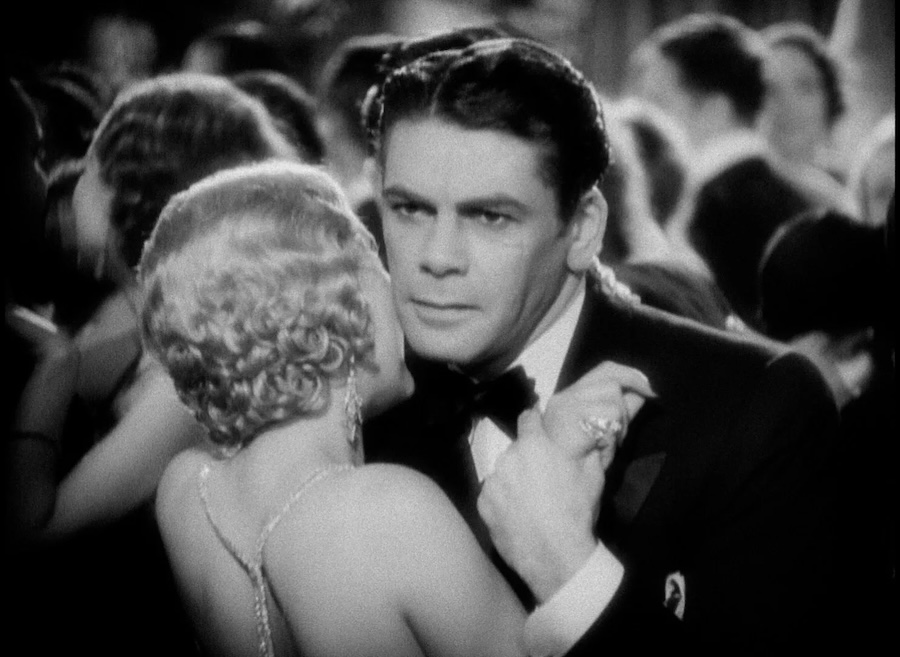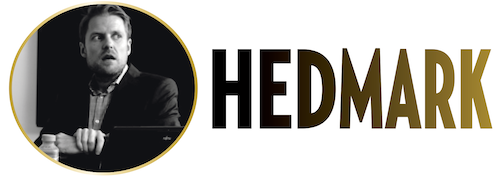
THE LOVE LIFE… THE BLOOD SECRETS… OF A SWAGGERING BUTCHER OF MEN!

The film begins with a stern warning, an indictment of gang rule in America and the government that does too little to stop it. The filmmakers want politicians to act decisively, but also demand the same of everyone in the audience. In other words, the problem belongs to everyone. As a Swede, living at time when my country is struggling with constant gang violence, you can spot similarities. There’s a telling scene in this film where a Chicago publisher defends why his paper should write so much about the bloodshed; after all, who benefits? But nothing good comes out of choosing to be silent.
Howard Hawks refused to direct that scene because he considered it a win for the Hays Office. Scarface was deemed so violent its premiere was delayed a year, as Hawks and Howard Hughes battled the censors.
Taking control of the South Side
In 1920, Italian immigrant Tony Camonte (Paul Muni) serves as a bodyguard for a Mafia boss in Chicago, when he decides to betray him together with one of the boss’s men, Johnny Lovo (Osgood Perkins). Together, Tony and Lovo take control of the South Side and its bootlegging operation. When Tony suggests they start moving into the North Side, Lovo says no because that would mean war with a rival Irish gangster. Lovo considers his reply an order, but Tony ignores it, and soon the city is shaken by violence. Tony and Lovo are headed for a confrontation, and it doesn’t help that the latter’s girlfriend Poppy (Karen Morley) relents to Tony’s constant attempts to woo her.
Inspired by Al Capone
Scarface came on the heels of two other great gangster hits, Little Caesar and The Public Enemy, both released in 1931. The former was inspired by Al Capone’s reign of terror in Chicago, and so was Scarface, based on a novel where the lead character shared many traits with the gangster, who was still a free man at the time of its release. Howard Hughes bought the rights to the novel and hired Ben Hecht to write the script. He was the right man for it, considering his past as a Chicago newspaperman and the Oscar-winning writer of the groundbreaking gangster movie Underworld (1927). Hecht added ingredients that would also remind audiences of Capone, such as a sequence echoing the Saint Valentine’s Day Massacre of 1929. Several other writers were involved in the final script, but Hecht took most of the credit, even finding himself confronted by Capone’s thugs, having to talk them into believing that the film had nothing to do with the boss.
Paul Muni has a brutal charm, cocky and almost childlike at times.
Muni has a brutal charm, cocky and almost childlike at times, giddy with excitement even as he’s crawling across the floor during an assassination attempt. Obviously, his greedily amoral character is condemned to an even greater degree by the fact that Hecht made the relationship with his sister Cesca look virtually incestuous. The supporting cast has George Raft, not yet a star, cast as Tony’s famously coin-flipping right-hand man who unwisely falls in love with Cesca, and Boris Karloff as another gangster. By the time of the film’s release, he had become a global phenomenon as Frankenstein’s monster; he’s very good here, even if he couldn’t sport an American accent if his life depended on it.
The final showdown may look a little too similar to the one in Underworld, and Scarface didn’t do anything strikingly different from Little Caesar and The Public Enemy, but the action is harrowingly hard-boiled and Hawks creates memorable symbolism out of things like bowling pins and neon signs. Much like a good breaking-news story, all three films are to the point, bare-bones, and packed with thrills.
Scarface 1932-U.S. 93 min. B/W. Produced by Howard Hawks, Howard Hughes. Directed by Howard Hawks. Screenplay: W.R. Burnett, John Lee Mahin, Seton I. Miller, Ben Hecht. Novel: Armitage Trail. Cast: Paul Muni (Antonio ”Tony” Camonte), Ann Dvorak (Francesca ”Cesca” Camonte), Karen Morley (Poppy), Osgood Perkins, C. Henry Gordon, George Raft, Boris Karloff.
Trivia: Full title onscreen: Scarface: The Shame of the Nation. Remade as Scarface (1983) and in India in 1990.
Last word: “We made Scarface because the violence of this particular era was interesting. Scarface is still being copied – and hence still lives. There were fifteen murders in Scarface, and people said I was crazy to have so many. But I knew that was the story: violence made the story. Also, in practice, all the gangster movies that have followed Scarface only reiterated the same material.” (Hawks, Cahiers du Cinéma)
